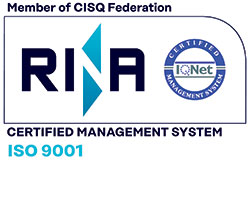Tools for Finishing Selection Guide Deburring Brushes (Reference)
Selection by Use (Reference)
| Model Number | Type | Hole Drilling | Edge Processing | Chamfering | Surface Polishing | Surface Roughness Adjustment | Cleaning |
|---|---|---|---|---|---|---|---|
| IMSN / IMSS / IMSG / IMSB | Micro-spiral Brushes | ◎ | x | △ | △ | △ | ○ |
| BHTM / BHCM | Deburring Brushes | ◎ | △ | ◎ | x | x | △ |
| MTM | Knotted Type Wheel Brushes with Shaft | x | ○ | ○ | ○ | x | ○ |
| MEBB | Knotted Type End Brushes | △ | x | x | ○ | x | ○ |
| MEBA | Crimp End Brushes | △ | x | x | ○ | x | ○ |
| BR□ | Deburring Brushes | ○ | x | x | △ | x | ○ |
| 5PACK-12□ / 5PACK-MK□, etc. | Miniature Brushes | ○ | ○ | ○ | x | x | ◎ |
| VCC | Crimp Cups | x | x | x | ◎ | x | ○ |
| VKC | Knotted Type Cups | x | x | x | ◎ | x | ○ |
| VSB | Knotted Type Wheels | x | ○ | x | ◎ | x | ○ |
| VSCT | Knotted Type Wheels | x | ○ | x | ◎ | x | ○ |
| VSTA | Knotted Type Wheels | x | ○ | x | ◎ | x | ○ |
Relation of Brush Materials and Use (Reference)
 There are many materials for brushes based on use, but for metal wires, it is standard to use brush materials with the same material as the work material.
There are many materials for brushes based on use, but for metal wires, it is standard to use brush materials with the same material as the work material.| Brush Materials | Use | Note |
| Steel Wire | It is ideal for getting rid of rust on iron plates, peeling paint, and finishing grinding of welded parts. | If the workpiece is aluminum, stainless steel, or brass, avoid the use of steel wires as they can cause workpiece rust. |
| Stainless Steel (SUS) |
It is ideal for aluminum, alloy, titanium, and stainless steel workpieces. | Use SUS316 if there is a possibility of rust. |
| Nylon with Abrasive AO (Note 1) SC (Note 2) |
The nylon brush with abrasive grain can polish with the side surface of the wire material and not just the tip. A wiping action effect can be gained by pushing the brush against the workpiece, and finishing operations and deburring that had to be done by hand, by filing, can be done simply. | ---- |
| Brass | It is ideal for brass and copper workpieces. | The polished object may turn black in color so do not use where discoloration may be a problem. |
Relation of Brush Materials and Work Materials (Reference)
| Work Materials | Brush Materials | |||||||
|---|---|---|---|---|---|---|---|---|
| Steel Wire |
Stainless Steel (SUS) |
Nylon | AO (Note 1) |
SC (Note 2) |
Brass | Triangle Piano Wire |
Brown Hair White Horse Hair Black Horse Hair |
|
| Aluminum | x | ○ | ○ | ○ | △ | x | x | ○ |
| Steel | ○ | ○ | x | △ | ○ | △ | ○ | x |
| Brass | x | x | ○ | ○ | △ | ○ | x | △ |
| Stainless Steel | x | ○ | x | ○ | ○ | x | x | x |
| Copper | x | x | x | ○ | △ | ○ | x | x |
| Castings | ○ | ○ | x | △ | ○ | △ | ○ | x |
| Resin | x | x | ○ | △ | △ | △ | x | ○ |
Features of Deburring Brushes

Effects of Cleaning with Brushes
Brushes will clean oxides, rust, and dirt from the surface and leave it smooth; however, their structural properties do not favor the "grinding" done by polishing cloths. Therefore, they are not tools for finishing to set dimensions.


Guidelines for Brushing Work

Brushing Adjustment Methods for More Effective Work
| Results of Brushing | Adjustment Methods | |
|---|---|---|
| If the process is too quick | ● Increase the length of the trim (hair length) ● Make the wire diameter narrower ● Lower the hair density |
● Decrease the brush outer diameter ● Lower brush rotation speed |
| If the process is too slow | ● Reduce the length of the trim (hair length) ● Make the wire diameter thicker ● Increase the hair density |
● Increase the brush outer diameter ● Increase brush rotation speed |
| If a smoother finish is required | ● Increase brush rotation speed ● Reduce the length of the trim (hair length) ● Make the wire diameter narrower |
● Increase the hair density ● Use nylon with abrasive instead of metal wires |
| If it is uneven | ● Increase the length of the trim (hair length) ● Lower the hair density |
● Use brushing holding tools |
| If it hits the periphery without deburring | ● Reduce the length of the trim (hair length) ● Increase the hair density |
● If the work material is soft, use nylon with abrasive |
| If the life of the brush is short | ● Increase the length of the trim (hair length) ● Make the wire diameter narrower |
|








